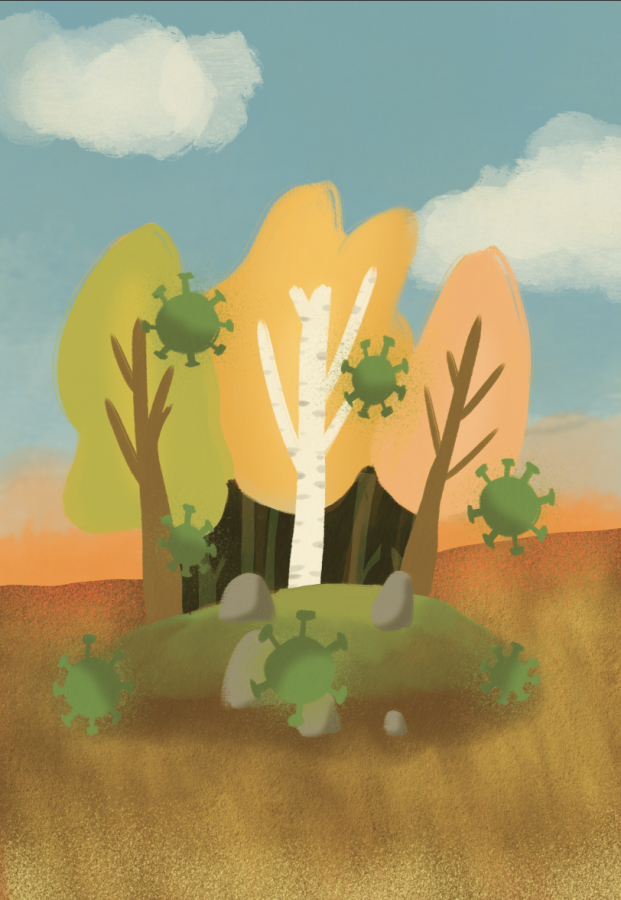The pandemic and the environment
How the environment has been affected post COVID-19
January 28, 2023
At the beginning of the COVID-19 pandemic, greenhouse emissions were low due to the lack of people using their cars, going on public transit or traveling on airplanes.
Opinions vary on how much this helped the environment.
Chemistry and epidemiology teacher Carol Taylor said the initial lockdown greatly impacted the environment by more people staying home so fewer cars on the road meant less pollution.
“I think one of the biggest changes to come out of the pandemic is companies realizing that they can operate virtually,” Taylor said. “There are a lot of people who are still working from home, not using their cars to commute to work every day, and it’s because companies have recognized that they could go without paying the large energy bills at their offices.”
The initial lockdown gave people more time to experience nature. Genetics and AP Environmental Science teacher Jessie Crowley said this made people appreciate nature even more.
“Going out and immersing yourself in these natural places all the time will make you more likely to make an effort to protect them,” Crowley said. “So in that sense, I feel like people want a connection to the natural world and to protect it now after the pandemic.”
Crowley said the best way to keep the environment healthy and back to where it was during the peak of the pandemic is to continue to protect and appreciate nature and wildlife, to watch our everyday energy consumption and to have conversations about climate change.
“Think about your day-to-day energy consumption and have those conversations with your family or friends surrounding climate change and the future,” Crowley said.
Dr. Joseph Oppong, a professor at the University of North Texas Department of Geography and the Environment, said the effects of the pandemic are complex.
Oppong said that due to economic devastation following the pandemic, it is simply not enough to ask for harmful practices (such as poor farming techniques) to be halted, because that results in a lack of resources for the people as well.
“If we can improve the quality of these people’s lives, by supporting better health systems there, we can probably do a better job of protecting our health here from global pandemics,” Oppong said.
He also said many impoverished countries are forced to export their abundant natural resources, such as timber, to pay off national debt, which thereby leads to the destruction of the environment via deforestation.
“You can control one thing, but in the process, you are also introducing another thing,” Oppong said.
He also noted the complexity of the issue and encouraged people to consider how they approach these issues in our world.
“Normally people just say ‘you know, you’re doing this wrong, you need to stop’. Nobody realizes what happens if you stop,” Oppong said.
To control future pandemics, Taylor said the government needs to put time and money into research.
“In terms of prevention, it has so much to do with us realizing that we have to put energy and money into planning,” Taylor said. “Over the years, the funding that’s going towards things like public health planning including pandemic prevention has been very much so dictated by who is in office and how they choose to spend their budget.”
Oppong discussed the urgent need for surveillance and said the ability to detect when a pandemic is beginning is a necessity for all countries, regardless of their affluence. The way for this to happen is for developed countries to help other countries create proper health care systems.
“A disease outbreak anywhere in our world today is a threat everywhere,” Oppong said.







